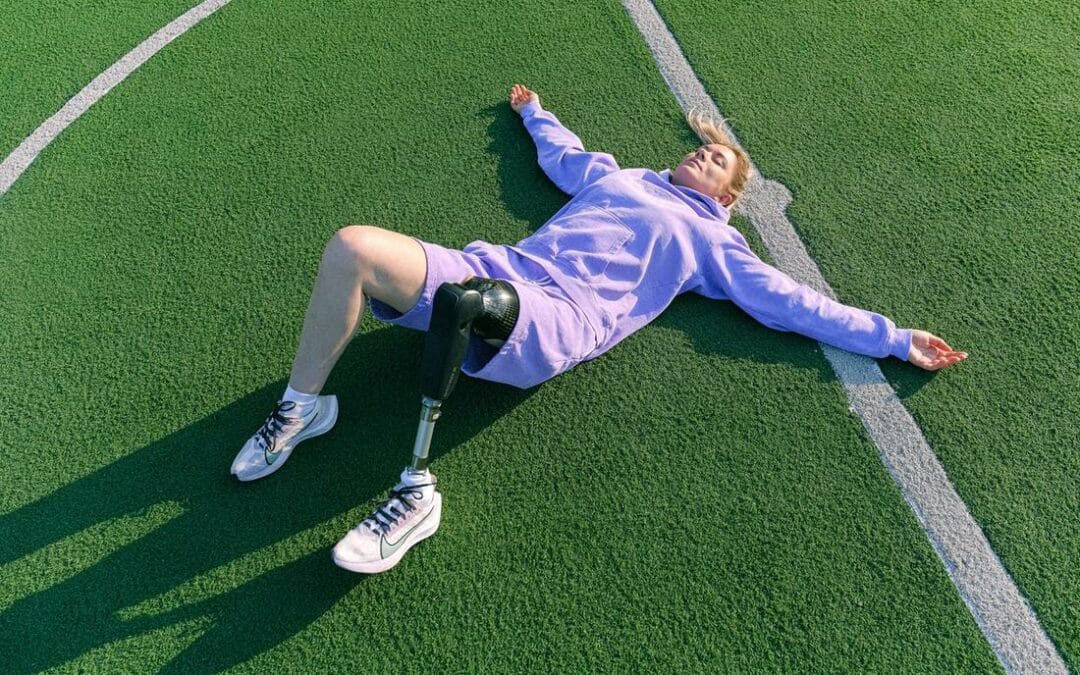“Transfemoral amputation” is the medical term for removing the leg from any point higher than the knee joint. Also known as ‘Above-the-knee amputation’. There can be many different reasons for a person to undergo surgery, such as frost-bite, vehicle accident, or Neuroma.
Whatever the cause, your surgical site and amputated limb are unlike any other patient’s. If you’ve undergone this surgery recently, you might be wondering what the process of getting fitted for prosthetics might look like.
That’s why the prosthetics you require will depend on several factors such as
- Personal preference
- The shape of your residual limb
- Level of activity you wish to maintain
- Physiotherapy your doctor has cleared you for
- How your residual limb heals and responds to treatment
The road to mobility after limb loss can be long and at times, painful. Whether you lost your limb suddenly in an accident or had weeks to prepare before the surgery mentally.
The great news is that more above-the-knee prosthetic options are available to you now than ever before.
Most prosthetics manufactured these days are lighter, more durable, and better fitting than their predecessors. With proper after-surgery and at-home care, you will be up and about sooner than seems possible right now.
Starting Your Journey
The procedure to get fitted for above-the-knee prosthetics will start shortly after you regain consciousness after amputation surgery. Right after surgery, it’s common to experience the following symptoms
- Swelling
- Phantom pain
- Tightness in the residual limb
- Pain and discomfort in the residual limb
Your doctor will help you manage all these symptoms and give care instructions for bathing, sitting, and cleaning your incision site. It’s crucial to follow all instructions to the T to prepare your limb for prosthetics.
Proper after-care is vital to minimise the chances of infection and ensure the availability of more prosthetic options for yourself.
First Orthotist Appointment
This step will happen once your doctor gives you the all-clear after examining the incision site. Your first meeting with your Orthotics is your first step toward reclaiming your mobility.
Once your doctor is happy with your recovery, a meeting with an orthotist will be scheduled during your hospital stay.
Your orthotist will ask questions about your pain levels, lifestyle, and activity level. Before designing and fitting you for your custom-made above-the-knee prosthetic.
Compression Sock
A shrinker or compression sock will be the first piece of equipment you will be fitted for. A shrinker sock acts as a compression garment for your residual limb and helps you by
- Decreasing swelling
- Protecting your incision site
- Lowering chances of developing edema
- Bettering your chances of using above-the-knee prosthetics with success
- Enabling your limb to become compatible with more prosthetic options
- Gently coax your incision into a more optimal shape for the use of prosthetics
- Desensitizing and numbing your incision to help manage pain once you start wearing prosthetics
Getting Fitted for the Liner
Once your residual limb adapts to wearing the compression sock, it’s time to start the process of getting fitted for your first prosthetic. To accommodate your limb’s unique shape, a liner made of soft material is worn on the limb. This liner is meant to
- Act as a shock absorber.
- Enable the prolonged use of prosthetics.
- Reduce friction between limb and prosthetic equipment.
- Reduce strain on your limb that’s healing from surgery.
Depending on your limb shape and physical needs, the liner can be off-the-shelf that’s slightly modified to fit you. Or your doctor might make a cast of your limb for a custom-shaped liner.
Temporary Prosthetic
The next step is a temporary or diagnostic prosthetic for your leg. That is usually a transparent and moldable prosthetic meant for use just at the prosthetist’s clinic. Think of it as training wheels for your above-the-knee prosthetic.
The prosthetist will guide you about its use and how to wear it correctly. A diagnostic prosthetic and physiotherapy will help your prosthetist assess your needs and progress. It will also help them decide the type of socket, suspension, liner, and material most suited for your final prosthetic.
Often, the temporary prosthetic is also modified to fit your limb to facilitate you during physiotherapy and support you better as your take the initial steps using your prosthetic.
Final Above-The-Knee Prosthetic
Once your prosthetist is satisfied with your healing and gait training, it’s time to get your long-term prosthetics. Carbon fiber is commonly the material of choice for above-the-knee prosthetics because of its durability, versatility, and ease of use.
The process of getting fitted for this prosthetic will be done over multiple appointments. Your prosthetist will measure, fit and adjust your prosthetic and calibrate it with your height and body. After finalizing alignment, it’s time for more gait training and physiotherapy.
Physiotherapy and Long-Term Care
Physiotherapy is a crucial part of the healing process. The time you spend practicing with your prosthetist and physiotherapist will empower you to confidently put on, take off and walk in your prosthetic.
Getting your prosthetic leg is an ongoing process as your limb changes and adjusts to new realities. Make sure to schedule regular follow-up appointments for physiotherapy and with your orthotist and prosthetist.
Taking the First Step Towards Reclaiming Your Mobility
Limb loss can be a devastating reality to adjust to. Our specialised teams at Align clinic are trained to help you deal with these changes. Reach out today and let our representative guide you more about the physiotherapy and prosthesis options available to you.




